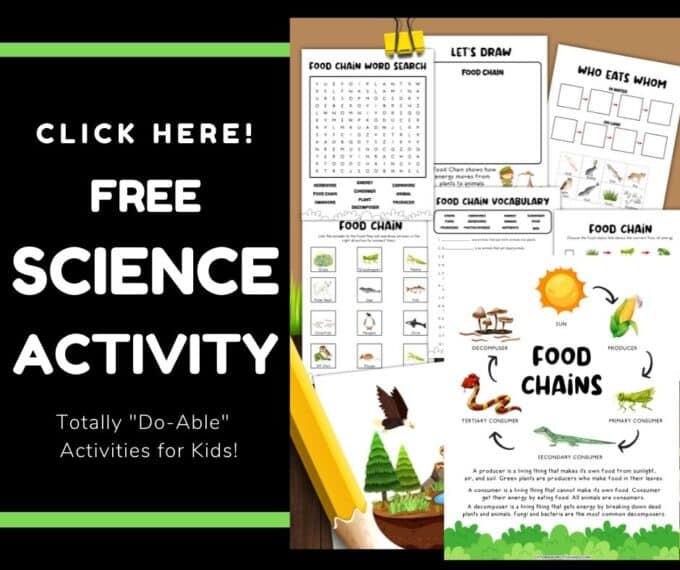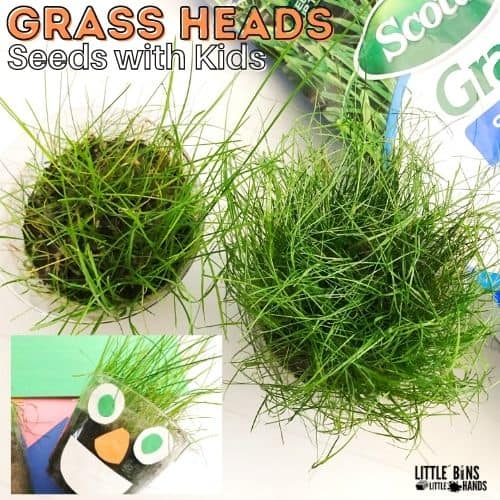All living plants and animals need energy to live on earth. Animals get energy by eating food, and green plants make their own food through the process of photosynthesis. Find out how to represent this flow of energy with a simple food chain. Plus, grab our printable food chain worksheets for you to use!
SIMPLE FOOD CHAIN FOR KIDS
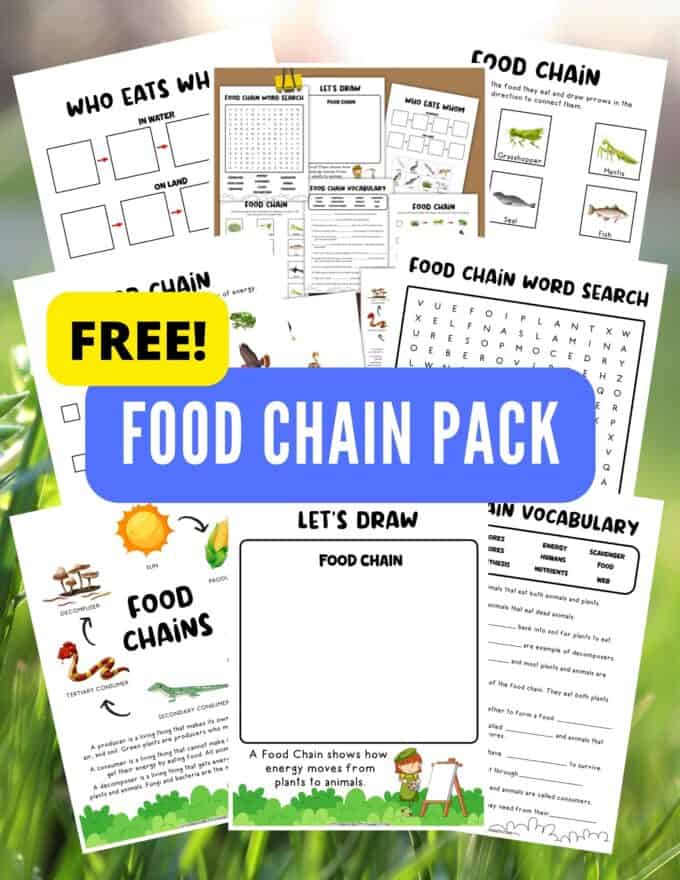
Biology of Food Chains
In the exciting world of biology, the food chain is like a superhero story that shows how living things depend on each other for energy and survival. It’s a fantastic adventure where plants, the ultimate chefs, use sunlight to cook up their own food.
Then, hungry herbivores, like rabbits and cows, come to the dinner table to munch on these tasty treats. But wait, here comes the action! Carnivores, like lions and wolves, are on the prowl, ready to feast on herbivores.
It’s a wild circle of life where everyone has a role to play. And don’t forget the cleanup crew – decomposers like bacteria and fungi, who work behind the scenes to recycle leftovers and keep the cycle going.
So, the food chain is like nature’s way of telling a fantastic story of who eats whom and how everyone in the big biological family is connected in this never-ending tale of life and survival.
For more biology activities for kids, find our complete list here.
What is a Food Chain?
A food chain is an easy way to represent the links between organisms in an ecosystem. Basically, who eats who? It shows the one-way flow of energy from producers to consumers to decomposers.
The producer in a food chain is a plant because it absorbs energy from the sun to make its own food through the process of photosynthesis. Examples of producers are trees, grass, vegetables etc.
Check out our photosynthesis worksheets for kids!
A consumer is a living thing that cannot make its own food. Consumers get their energy by eating food. All animals are consumers. We are consumers!
There are three types of consumers in a food chain. Animals that eat only plants are called herbivores and animals that eat only other animals are called carnivores. Examples of herbivores are cows, sheep and horses. Examples of carnivores are lions and polar bears.
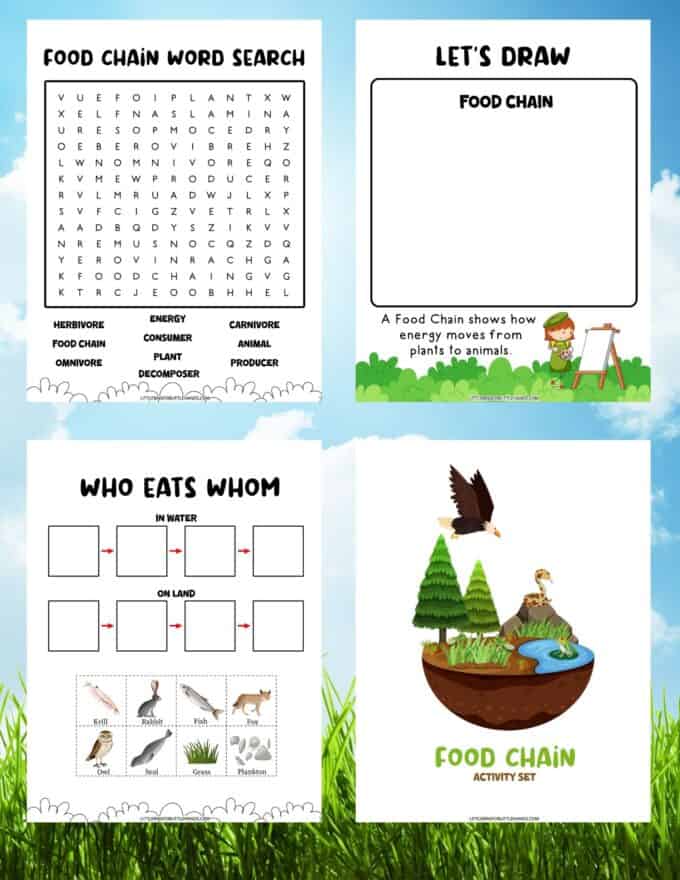
Omnivores are animals that consume both plants and other animals for food. That’s most of us!
What animal is at the top of the food chain? Animals at the top of food chains are called predators. An animal is considered the top predator when it has no other animals that will eat it. Examples of top predators are eagles, lions, tigers, orcas, wolves.
A decomposer is a living thing that gets energy from breaking down dead plants and animals. Fungi and bacteria are the most common decomposers.
Decomposers, like mushrooms are very important for the food chain. Decomposers help put nutrients back into soil for plants to use.
Also learn about the important role of decomposers in the nitrogen cycle and carbon cycle.
Food Chain Examples
A very simple food chain example would be grass —> rabbit —-> fox
The food chain starts with a producer (grass), which is eaten by a herbivore (rabbit) and the rabbit is eaten by a carnivore (fox).
Can you think of a simple food chain from the types of food you eat?
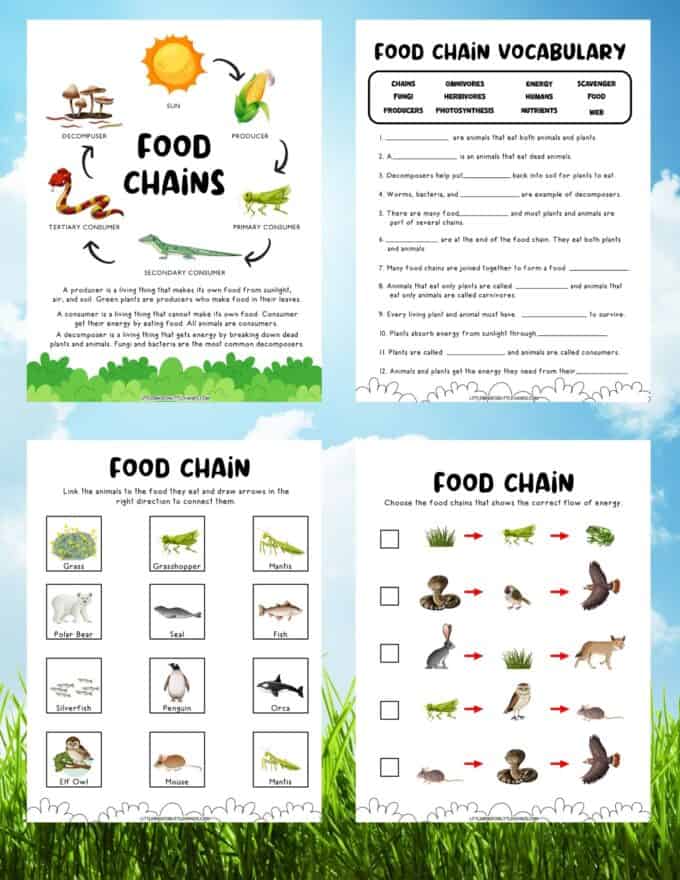
Food Web vs Food Chain
There are many food chains, and most plants and animals will be part of several food chains. All these food chains joined together are called a food web.
The difference between a food chain and a food web is that a food chain shows only one flow of energy from one level to another. While a food web shows multiple connections at every level. A food web more accurately represents the food relationships you would find in an ecosystem.
Just think of all the different foods we eat!
CLICK HERE TO GET YOUR PRINTABLE FOOD CHAIN WORKSHEETS!
Biological Science for Kids
Looking for more lesson plans about nature? Here are a few suggestions for fun activities that would be perfect for preschoolers and elementary kids.
Create a biome lapbook and explore 4 main biomes in the world and the animals that live in them.
Use our photosynthesis worksheets to understand how plants make their own food.
Learn about osmosis when you try this fun potato osmosis experiment with the kids.
Learn about the apple life cycle with these fun printable activity sheets!
Use art and craft supplies you have on hand to create your own plant with all the different parts! Learn about the different parts of a plant and the function of each.
Use a few simple supplies you have on hand to grow these cute grass heads in a cup.
Grab some leaves and find out how plants breathe with this simple activity.
Learn about how water moves through the veins in a leaf.
Watching flowers grow is an amazing science lesson for kids of all ages. Find out what are easy flowers to grow!
Explore the life cycle of a bean plant.
See up close how a seed grows and what would actually be happening under the ground with a seed germination jar.
More Animal Activities to Explore
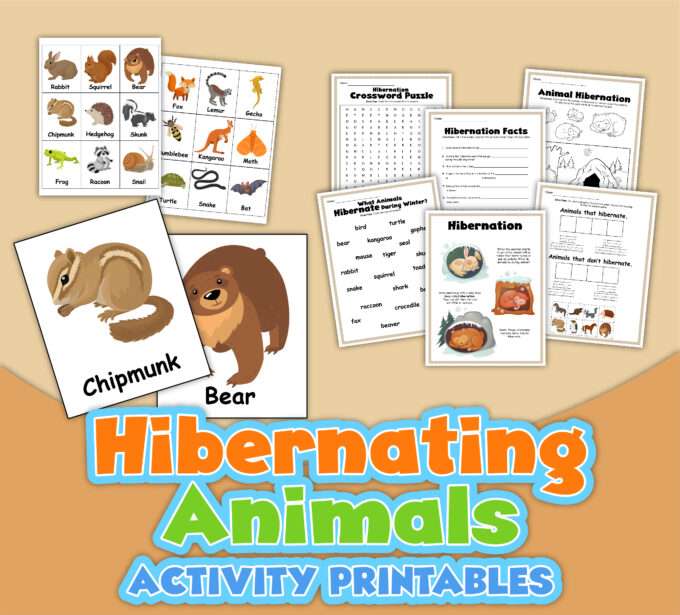
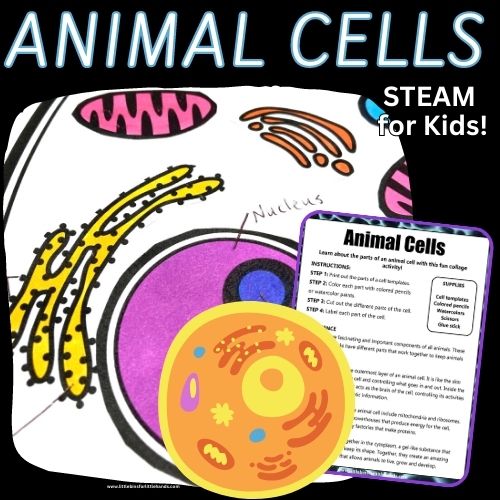
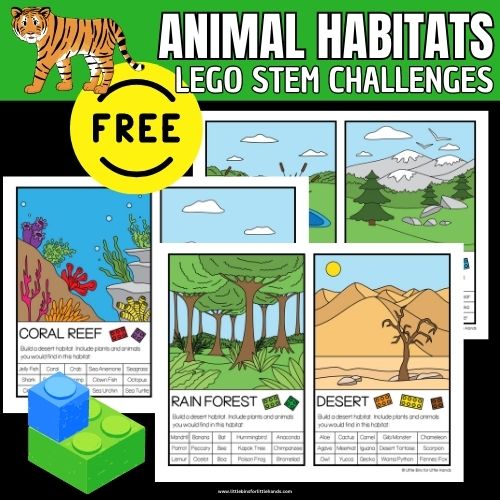
Printable Science Projects For Kids
If you’re looking to grab all of our printable science projects in one convenient place plus exclusive worksheets and bonuses like a STEAM Project pack, our Science Project Pack is what you need! Over 300+ Pages!
- 90+ classic science activities with journal pages, supply lists, set up and process, and science information. NEW! Activity-specific observation pages!
- Best science practices posters and our original science method process folders for extra alternatives!
- Be a Collector activities pack introduces kids to the world of making collections through the eyes of a scientist. What will they collect first?
- Know the Words Science vocabulary pack includes flashcards, crosswords, and word searches that illuminate keywords in the experiments!
- My science journal writing prompts explore what it means to be a scientist!!
- Bonus STEAM Project Pack: Art meets science with doable projects!
- Bonus Quick Grab Packs for Biology, Earth Science, Chemistry, and Physics



